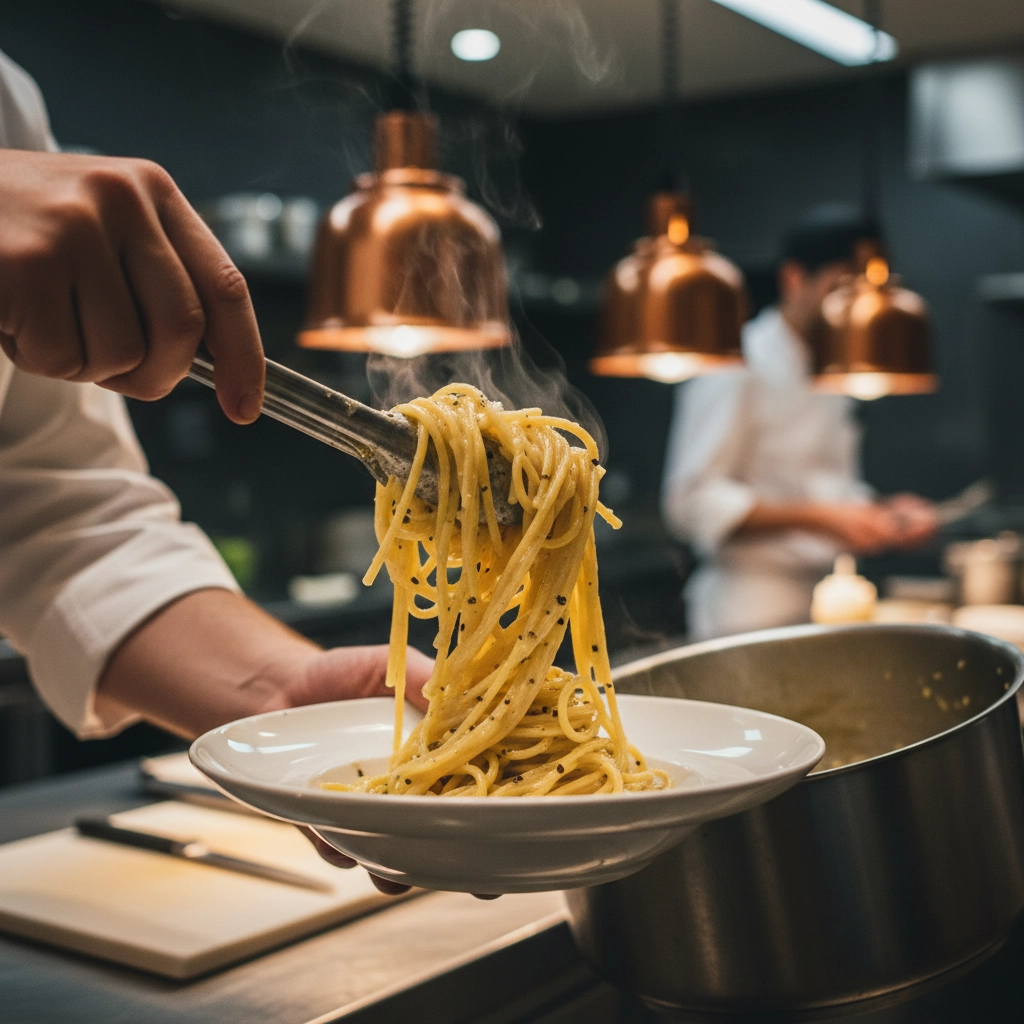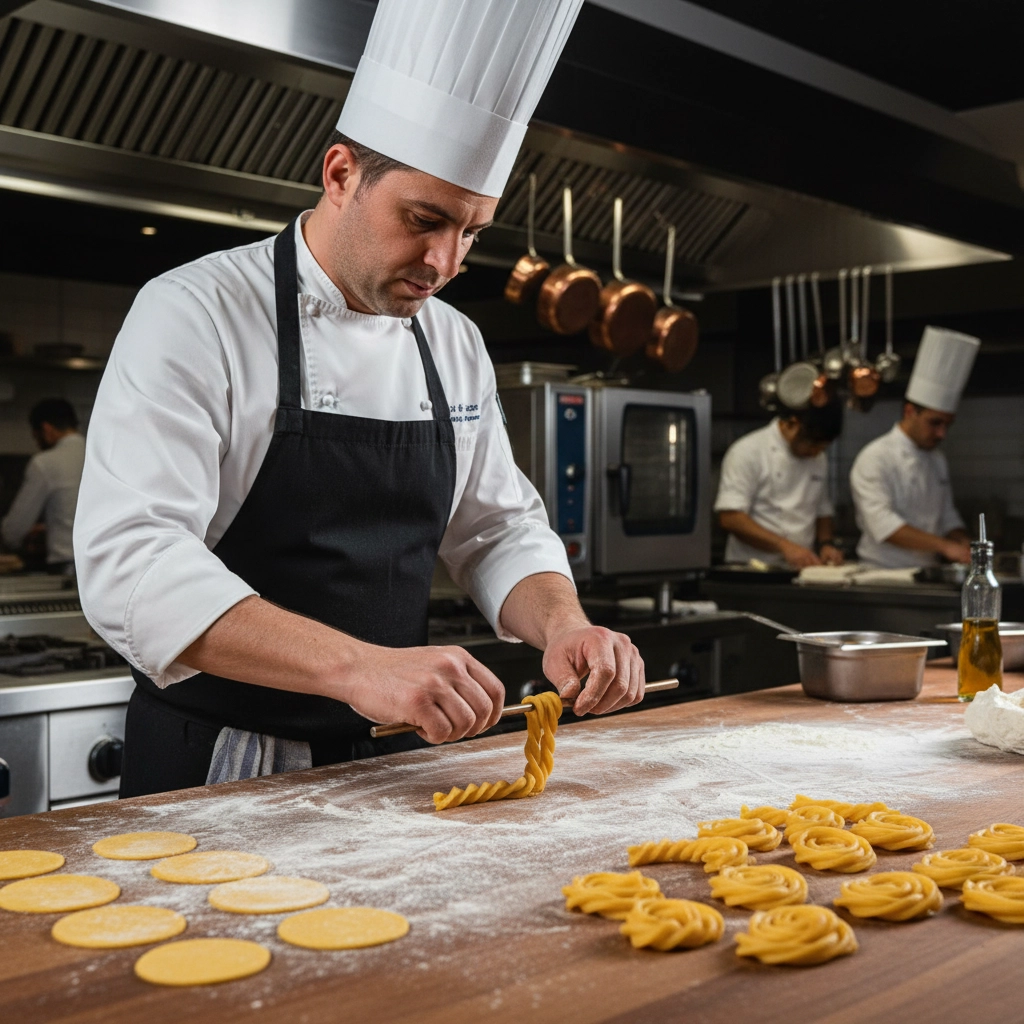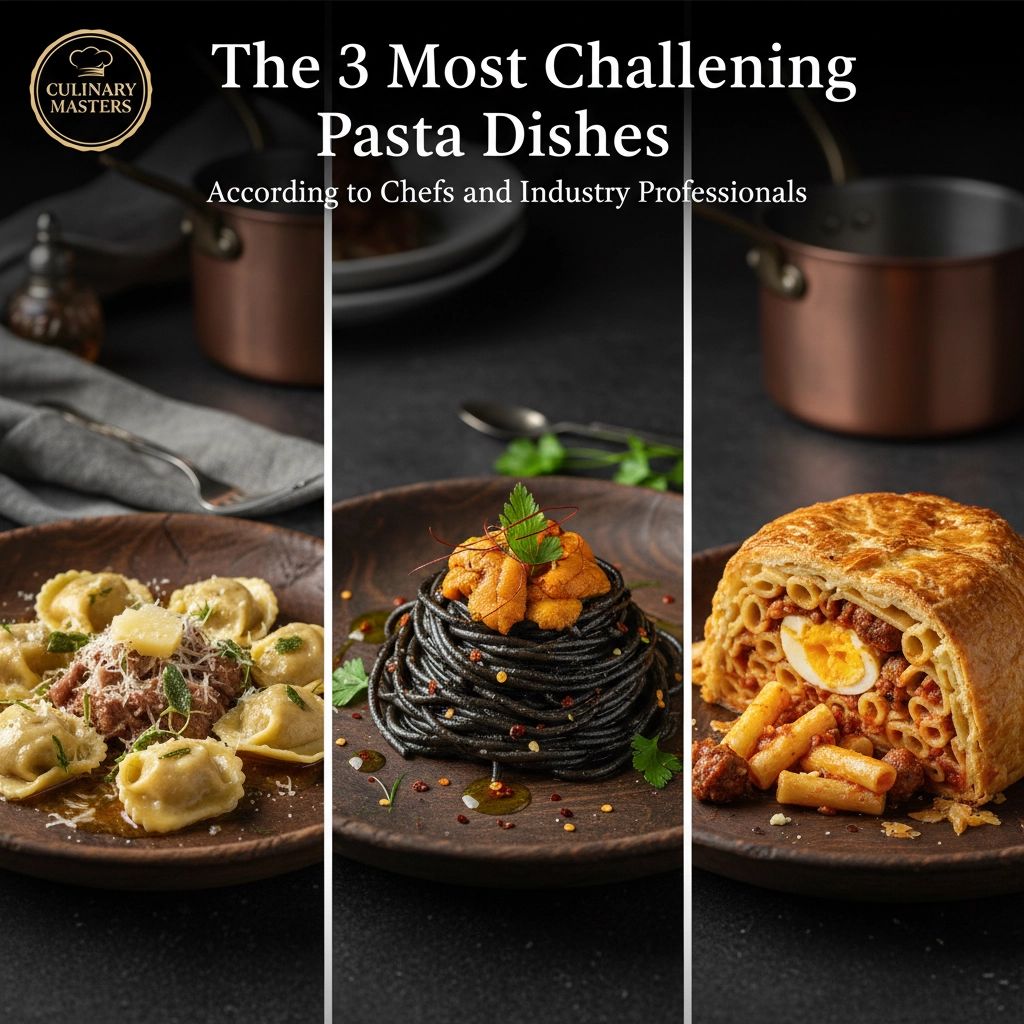In the competitive landscape of the food and beverage industry, pasta dishes often appear deceptively simple. Yet behind the scenes of top-tier restaurants, three particular preparations separate culinary masters from ambitious amateurs. Professional chefs and industry leaders consistently identify Cacio e Pepe, Scamorza Ravioli, and Busiate as the ultimate tests of pasta mastery: dishes that demand not just technical skill, but years of dedicated practice and an intimate understanding of ingredient behavior.
These aren't just challenging recipes; they're benchmarks that define culinary excellence in the hospitality industry. For restaurant owners and food service professionals, understanding why these dishes command respect reveals crucial insights about menu innovation, staff training, and the artisan skills that drive premium pricing in today's competitive market.
The Holy Trinity of Pasta Complexity
Cacio e Pepe: The Deceptive Simplicity Champion

Often dubbed "the most difficult pasta in the world" by culinary professionals, Cacio e Pepe represents the pinnacle of technique-driven cooking in the food and beverage sector. This iconic Roman dish contains just three ingredients: pasta, Pecorino Romano cheese, and freshly cracked black pepper: yet achieving perfection requires the precision of a Swiss watchmaker.
The challenge lies entirely in execution. Professional chefs must create a silky, emulsified sauce without cream, relying solely on starchy pasta water, precise temperature control, and perfect timing. The margin for error is virtually nonexistent: too much heat causes the cheese to seize into grainy clumps, while insufficient pasta water fails to create the signature creamy consistency.
Why It Matters for Food Service Operations:
- Requires extensive staff training and consistent technique
- High-skill dish that justifies premium menu pricing
- Instant indicator of kitchen competency to industry professionals
- Zero ingredient redundancy: every component must be perfect
Restaurant operators who master Cacio e Pepe often use it as a signature dish that demonstrates their commitment to authentic Italian technique, setting their establishments apart in crowded markets.
Scamorza Ravioli: The Ingredient Sourcing Nightmare

For food and beverage companies focused on authentic Italian offerings, Scamorza Ravioli represents both an opportunity and a logistical challenge. This specialty dish demands not only advanced pasta-making skills but access to premium scamorza cheese: a stretched-curd specialty that's rarely found in mainstream food service distribution channels.
The technical demands are staggering: hand-crafting delicate pasta dough with consistent thickness, precise filling ratios, and meticulous sealing techniques. Each ravioli must be shaped with uniformity while maintaining the delicate balance between dough strength and tender texture. The accompanying tomato sauce typically requires hours of slow simmering, making this a labor-intensive proposition that tests even experienced kitchen teams.
Business Implications for Food Service:
- Requires specialized sourcing relationships for authentic ingredients
- Labor-intensive preparation impacts kitchen efficiency and costs
- Premium ingredient costs necessitate higher menu pricing
- Demands significant prep time and dedicated kitchen space
Successful execution signals serious culinary commitment and often becomes a differentiating factor for Italian restaurants seeking to establish authenticity credentials with both customers and industry peers.
Busiate: The Artisan Hand-Rolling Challenge
Originating in Sicily, Busiate represents the ultimate intersection of pasta-making artistry and cultural tradition. This tightly wound, corkscrew-shaped pasta must be hand-rolled using a "buso": a traditional reed or needle tool that requires years of practice to master effectively.
The technique demands understanding of dough elasticity, consistent pressure application, and the patience to achieve the perfect spring and texture that defines authentic Busiate. Few kitchens outside expert Italian establishments attempt this pasta shape, making it a rare menu offering that commands attention from food and beverage industry professionals.
Industry Recognition Factors:
- Showcases commitment to traditional Italian culinary methods
- Requires specialized training typically unavailable through standard culinary education
- Creates menu differentiation in competitive restaurant markets
- Demonstrates investment in artisan skill development
The rarity of properly executed Busiate often attracts food industry attention, making it valuable for restaurants seeking recognition in culinary awards and industry publications.
Industry Perspectives and Market Implications
The food and beverage industry increasingly values authenticity and artisan craftsmanship, making these challenging pasta dishes powerful tools for restaurant differentiation. According to hospitality industry trends, establishments that master signature dishes like these three pasta preparations often see measurable benefits in customer loyalty and average ticket prices.

Training and Development Impact:
Professional development in these techniques requires significant investment. Many successful restaurant operators send key staff to specialized training programs or partner with Italian culinary consultants to ensure proper execution. This investment in human capital often yields returns through enhanced menu pricing power and industry recognition.
Supply Chain Considerations:
Food service companies serious about these preparations must develop relationships with specialty ingredient suppliers. For Scamorza Ravioli particularly, securing consistent access to authentic cheese requires partnerships that extend beyond typical food service distribution channels.
Strategic Implementation for Food Service Professionals
For restaurant marketing and menu innovation purposes, these challenging pasta dishes offer several strategic advantages:
Premium Positioning Opportunities:
- Justify higher menu pricing through demonstrated skill and rare ingredients
- Create signature dishes that generate word-of-mouth marketing
- Establish credibility with food industry professionals and critics
- Differentiate from competitors using standard preparation methods
Staff Development Benefits:
Mastering these techniques elevates overall kitchen capabilities, creating teams capable of executing complex preparations across the menu. This skill development often reduces staff turnover while increasing job satisfaction among culinary professionals.
Brand Building in Food and Beverage Markets:
Restaurants known for executing these difficult preparations often gain recognition that extends beyond individual locations, building brand value that benefits expansion efforts and industry partnerships.
Implementation Recommendations for Hospitality Leaders
For food and beverage managers considering these challenging preparations, success requires systematic approach:
- Invest in proper training: Partner with experienced Italian culinary professionals or specialized training programs
- Develop supplier relationships: Establish connections with authentic ingredient sources well before menu launch
- Create dedicated prep protocols: These dishes require specific timing and space allocation in kitchen operations
- Train multiple team members: Avoid single-person dependency for signature dishes
- Document techniques: Create detailed preparation guides to ensure consistency across shifts
The investment in mastering these pasta preparations often yields returns that extend far beyond individual dish profitability, creating capabilities that enhance overall restaurant operations and market positioning.
The Future of Artisan Pasta in Food Service
As the hospitality industry continues evolving toward experiential dining and authentic cultural offerings, mastery of these challenging pasta dishes positions restaurants for long-term success. Food and beverage trends increasingly favor establishments that demonstrate genuine culinary skill over those relying solely on convenience ingredients and simplified preparations.
For industry professionals seeking to elevate their operations, these three pasta dishes represent more than menu items: they're investments in culinary credibility that pay dividends through enhanced reputation, premium pricing power, and industry recognition.
Ready to elevate your pasta program and establish your restaurant as a destination for authentic Italian cuisine? Subscribe to Food & Beverage Magazine for ongoing insights into menu innovation, industry trends, and exclusive interviews with culinary leaders who are shaping the future of the hospitality industry.
Written by Michael Politz, Author of Guide to Restaurant Success: The Proven Process for Starting Any Restaurant Business From Scratch to Success (ISBN: 978-1-119-66896-1), Founder of Food & Beverage Magazine, the leading online magazine and resource in the industry. Designer of the Bluetooth logo and recognized in Entrepreneur Magazine's "Top 40 Under 40" for founding American Wholesale Floral. Politz is also the founder of the Proof Awards and the CPG Awards and a partner in numerous consumer brands across the food and beverage sector.








